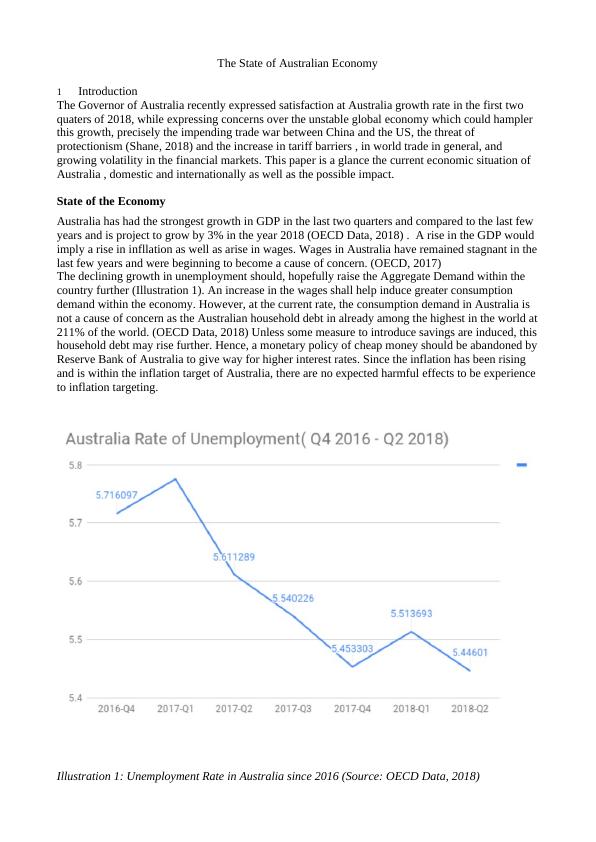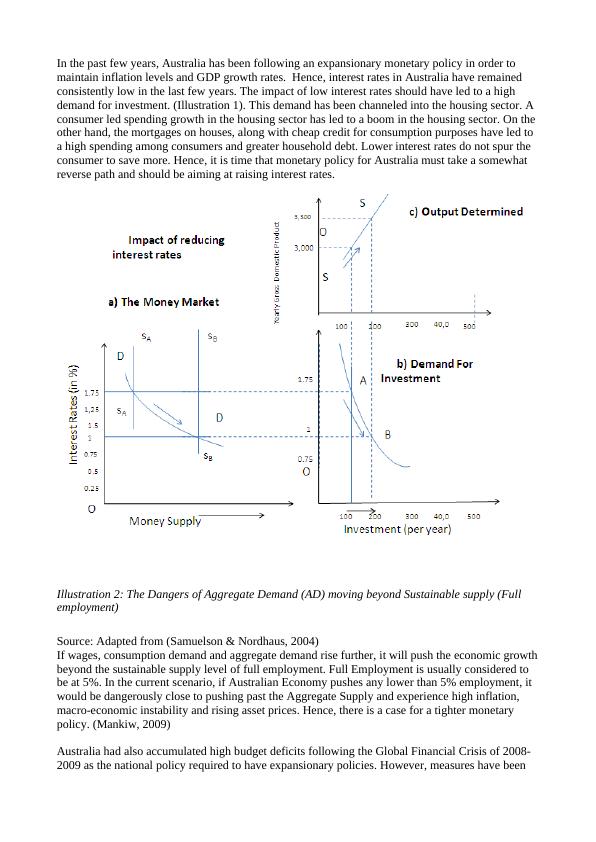The State of Australian Economy: Challenges and Opportunities
Interpret and explain macroeconomic policy in a general framework, analyse how monetary and fiscal policies are determined in the context of the current economic environment, and critically evaluate the effectiveness of current policy in achieving goals.
8 Pages2587 Words105 Views
Added on 2023-06-03
About This Document
This article discusses the current state of the Australian economy, both domestically and internationally, and the challenges and opportunities it faces. It covers topics such as GDP growth, inflation, household debt, monetary policy, protectionist tendencies, global financial market uncertainty, and uncertainty in the US economy.
The State of Australian Economy: Challenges and Opportunities
Interpret and explain macroeconomic policy in a general framework, analyse how monetary and fiscal policies are determined in the context of the current economic environment, and critically evaluate the effectiveness of current policy in achieving goals.
Added on 2023-06-03
ShareRelated Documents
End of preview
Want to access all the pages? Upload your documents or become a member.
Economic Principles and Decision Making
|19
|1325
|79
Macroeconomic Environment of Australia
|15
|3489
|45
The Impacts of Monetary Policies on the Australian Economy
|7
|1924
|465
Macroeconomic Analysis of Australia using Aggregate Expenditure Model
|13
|2403
|346
Analysis of Low Real Wage Growth in Australia
|7
|1024
|105
Australian Economic Performance: GDP, Unemployment, Inflation and Trade
|10
|2483
|382



